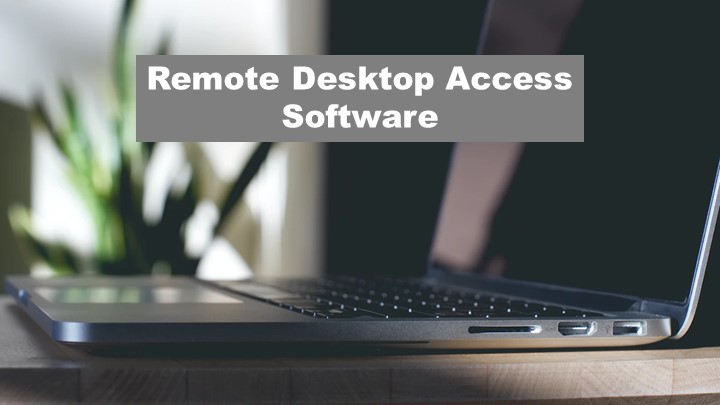Last Updated on July 25, 2023 by Uncle Pat Ugwu
Businesses are generating and handling an unprecedented amount of digital content, from images and videos to documents and graphics. The efficient management of these digital assets has become crucial for organizations to maintain their competitive edge and streamline their workflows.
This has generated a lot of concern for business organisation who think of how to securely keep these digital assets for future use. As you may know, changing of an officer or resignation may lead to total loss of valuable contents of an organisation.
That is why we dedicate this is article to explores some of the world of Digital Asset Management Tools (DAM) and its significance in modern business operations. Learn more about 8 Digital Citizenship Examples [Infographic].
Let us first understand what DAM Software is all about.
What are Digital Asset Management Tools (DAM)?
Digital Asset Management Tool, often referred to as DAM, is a specialized system designed to store, organize, retrieve, and distribute digital assets in a centralized and efficient manner. These assets can include images, videos, audio files, documents, presentations, and more.
DAM solutions aim to provide a structured and searchable database that simplifies content management and ensures quick access to assets when needed.
The Importance of DAM for Businesses
In today’s business environment, time is of the essence. Efficiently managing digital assets can make or break a company’s marketing efforts, brand consistency, and collaboration among teams. DAM software facilitate the seamless sharing of assets across departments and enable businesses to create, update, and distribute content swiftly, increasing overall productivity and reducing redundancy.
Key Features and Benefits of DAM Software
1. Centralized Storage and Organization
A fundamental feature of DAM software is its ability to store all digital assets in one centralized repository. This eliminates the need for scattered storage solutions and minimizes the risk of assets getting lost or misplaced. Additionally, DAM allows for easy categorization and tagging of files, making it effortless to locate and retrieve specific assets.
2. Metadata Management
Metadata plays a vital role in DAM systems. It involves adding relevant information such as descriptions, copyright details, keywords, and usage rights to each asset. This makes searching for assets more efficient and helps maintain copyright compliance.
3. Version Control and Collaboration
DAM software enables version control, ensuring that teams work with the most up-to-date assets. It also facilitates collaboration by allowing multiple users to access, edit, and approve assets simultaneously.
4. Rights Management
Digital assets often come with specific usage rights and permissions. DAM solutions offer tools to manage and enforce these rights, safeguarding businesses from copyright infringements and legal complications.
5. Search and Retrieval
Locating a specific asset within a vast database can be time-consuming without proper search capabilities. DAM software comes equipped with advanced search functionalities, enabling users to find assets quickly through keywords, filters, and other criteria.
Types of Digital Asset Management Software
There are various types of DAM software available, catering to different business needs and preferences:
1. On-Premise DAM
On-premise DAM solutions are hosted locally on a company’s servers. They offer complete control over data and security but require dedicated IT resources for maintenance and upgrades.
2. Cloud-Based DAM
Cloud-based DAM solutions operate on remote servers, allowing users to access assets from anywhere with an internet connection. They offer scalability, automatic updates, and reduced IT overheads.
3. Open-Source DAM
Open-source DAM software provides flexibility for customization and is often budget-friendly. However, it may require more technical expertise for implementation and ongoing support.
How to Choose the Right DAM Software for Your Business
Selecting the most suitable DAM software for your business requires careful consideration of various factors:
1. Assessing Your Needs and Goals
Understanding your organization’s specific requirements and long-term goals will help identify the critical features and functionalities for your DAM solution.
2. Scalability and Integration
Ensure the chosen DAM software can accommodate your growing content library and seamlessly integrate with existing tools and systems.
3. User-Friendly Interface
An intuitive and user-friendly interface is crucial for quick adoption and minimal training requirements among your team members.
4. Security and Compliance
Prioritize a DAM system that offers robust security measures and complies with industry regulations to protect sensitive assets and data.
5. Customer Support and Training
Reliable customer support and comprehensive training resources are essential to maximize the benefits of your DAM software investment.
Implementing DAM Software Successfully
Implementing DAM software requires careful planning and execution:
1. Planning and Strategy
Create a clear roadmap for the DAM implementation, including setting objectives, defining roles, and outlining the timeline.
2. Data Migration and Integration
Migrating existing assets into the DAM system smoothly is critical. Ensure data integrity and consistency during the migration process.
3. User Adoption and Training
Thoroughly train your team on how to use the DAM system effectively and encourage its adoption to ensure a successful implementation.
Top Digital Asset Management Software Providers
Several companies offer powerful DAM solutions that cater to different business needs:
1. Bynder
Bynder is a versatile DAM platform that caters to businesses of all sizes. It provides an intuitive interface, making it easy to manage and distribute digital assets efficiently. Bynder offers robust features like asset versioning, customizable access controls, and workflow automation, which enhances collaboration and streamlines content creation. Integration with various marketing tools further improves marketing workflows.
Features
- Asset versioning and history tracking
- Customizable access controls and permissions
- Workflow automation for streamlined content creation
Pros:
- Excellent collaboration capabilities
- Powerful asset management features, and
- Intuitive user interface.
Cons:
- Can be pricey for smaller organizations
- Reporting and analytics could be more robust.
2. Brandfolder
Brandfolder focuses on simplifying brand management and marketing workflows. Its user-friendly interface allows users to organize and share assets effortlessly. The platform’s AI-powered tagging and advanced search functionality ensure quick asset discovery.
Brandfolder enables businesses to create customizable brand portals, enforcing brand consistency across all channels.
Features
- AI-powered asset tagging and keyword suggestions
- Customizable brand portals for consistent branding
- Advanced search and filtering options
Pros:
- Strong emphasis on branding and simplicity
- AI tagging improves asset discoverability, and
- Strong security measures.
Cons:
- May lack some advanced DAM features required by larger enterprises
- Limited reporting capabilities.
3. Filecamp
Filecamp is an affordable and user-friendly DAM solution designed for small and medium-sized businesses. Users can organize assets into folders, assign metadata, and securely share files with stakeholders. Its simple setup and scalability make it an attractive option for growing organizations.
While it may not have the extensive feature set of larger DAM systems, it covers the basics well and provides a solid foundation for asset management.
Pros:
- Cost-effective for smaller businesses
- Easy-to-use interface, and
- Scalable for growing needs.
Cons:
- Some advanced DAM features may be missing
- Not as robust as enterprise-level solutions.
Features
- Folder-based asset organization and metadata management
- Secure file sharing with access controls
- Scalable for growing business needs
4. MediaValet
MediaValet is a cloud-based DAM system tailored for enterprise-level businesses. It offers advanced features such as AI-based auto-tagging, video management, and scalable storage options. MediaValet emphasizes high-security standards and provides integrations with other marketing and creative platforms.
Features
- AI-based auto-tagging and keyword suggestions
- Video management and playback support
- Scalable cloud storage
Pros:
- AI-powered auto-tagging improves asset organization
- Video management enhances multimedia capabilities, and
- Scalability accommodates enterprise-level needs.
Cons:
- Can be costly for smaller businesses
- Some users may find the learning curve steep.
5. Canto
Canto is a DAM solution focused on serving marketing teams and creative professionals. It centralizes digital assets and simplifies content sharing. Canto offers collaborative features and customizable branding options to maintain brand consistency across all channels.
Features
- Centralized asset repository
- Customizable branding portals and galleries
- Collaborative annotation and commenting on assets
Pros:
- Collaborative annotation and commenting on assets facilitate teamwork
- Customizable branding enhances brand consistency, and
- Integration with creative applications streamlines creative workflows.
Cons:
- Pricing might be a concern for some users
- User interface could be more modern and intuitive.
6. Amplifi.io
Amplifi.io is a DAM platform specifically designed to cater to the needs of e-commerce businesses. It streamlines product content management and distribution, helping businesses present accurate and up-to-date product information to customers.
Amplifi.io focuses on simplifying the creation and distribution of product content across various marketing channels, ensuring consistency and accuracy in product representation.
Features
- E-commerce-focused product content management
- Real-time synchronization of product data across channels
- Integration with e-commerce platforms and marketing channels
Pros:
- E-commerce-focused features improve product content management
- Real-time synchronization ensures data accuracy, and
- Integration with e-commerce platforms streamlines marketing workflows.
Cons:
- Might lack some advanced DAM capabilities required by larger enterprises
- Pricing might not be suitable for smaller businesses.
7. MarcomCentral
MarcomCentral is a DAM system designed to enhance marketing operations. It allows users to store, manage, and distribute marketing materials while maintaining brand consistency and compliance. MarcomCentral features customizable branding options and templated asset creation for localized content, making it an ideal choice for organizations with distributed marketing teams.
Features
- Centralized marketing asset repository
- Templated asset creation for localized content
- Integration with marketing automation tools
Pros:
- Templated asset creation enhances localized content
- Integration with marketing automation tools streamlines marketing workflows, and
- Role-based access controls ensure security.
Cons:
- May lack some advanced DAM features required by large enterprises
- User interface could be more modern and intuitive.
8. Libris (by PhotoShelter)
Libris is a DAM platform designed to meet the needs of visual content management for businesses and organizations. It offers a user-friendly interface that allows users to organize, share, and distribute visual assets efficiently.
Libris focuses on simplifying workflows for visual storytelling, making it an excellent choice for creative teams, photographers, and media organizations.
Features
- Visual asset management for photographers and media organizations
- Advanced search and filtering options for efficient asset discovery
- Collaboration tools for creative teams
Pros:
- User-friendly interface improves usability
- Extensive support for visual content types, and
- Advanced search capabilities enhance asset discoverability.
Cons:
- May lack some advanced DAM features found in larger enterprise solutions
- Pricing might be a concern for smaller businesses.
9. MediaBeacon
MediaBeacon is an enterprise-level DAM system that offers powerful asset management and workflow automation capabilities. It caters to organizations with large-scale digital asset management needs.
MediaBeacon’s comprehensive features include AI-powered asset tagging, video management, and workflow customization to streamline creative processes.
Features
- AI-powered asset tagging and metadata management
- Video management and playback support
- Customizable workflows for streamlined content creation
Pros:
- Advanced AI-powered asset tagging improves asset organization
- Robust video management capabilities, and
- Customizable workflows for streamlined content creation.
Cons:
- Complexity and cost may be too high for smaller businesses
- The learning curve could be steep for some users.
10. DemoUp Cliplister
DemoUp Cliplister is a DAM solution focused on providing video management and e-commerce support. It helps businesses manage and distribute video content effectively across various platforms and channels.
Cliplister streamlines the creation and delivery of video content, optimizing product presentation for e-commerce businesses.
Features
- Video management and playback support
- Real-time product data synchronization
- Integration with e-commerce platforms
Pros:
- E-commerce-focused video management capabilities
- Real-time product data synchronization, and
- Integration with e-commerce platforms.
Cons:
- Limited to video content management
- Might lack some general DAM features required by diverse businesses.
11. Wedia
Wedia is a DAM platform tailored for marketing teams and creative professionals. It centralizes marketing assets, streamlines content collaboration, and provides tools for creating on-brand content. Wedia focuses on helping businesses optimize their marketing workflows, ensuring efficient asset management, and consistent brand representation.
Features
- Centralized marketing asset repository
- Collaborative annotation and commenting on assets
- Customizable branding options
Pros:
- Collaboration tools facilitate teamwork
- Customizable branding options maintain brand consistency, and
- Integrations with creative applications enhance creative workflows.
Cons:
- Some users may find the interface less intuitive
- Pricing may not be suitable for smaller businesses.
12. Scaleflex
Scaleflex is a DAM solution that focuses on image and video management for businesses and developers. It offers powerful image optimization and delivery capabilities, ensuring optimal performance and user experience across various platforms.
Scaleflex’s CDN integration allows for fast and reliable asset distribution.
Features
- Image and video optimization for improved performance
- CDN integration for efficient asset delivery
- Developer-friendly APIs and integrations
Pros:
- Advanced image and video optimization capabilities
- Seamless CDN integration for efficient asset delivery, and
- Developer-friendly features.
Cons:
- Might not offer a complete range of DAM features required by larger enterprises
- Pricing might be a concern for smaller businesses.
13. Adobe Experience Manager Assets
Adobe Experience Manager Assets is a part of the Adobe Marketing Cloud suite and is an enterprise-level DAM software. It provides a comprehensive set of features for organizing, managing, and distributing digital assets.
With integration into Adobe Creative Cloud, it streamlines the creative process and enables collaboration between marketing and creative teams.
Features
- Integration with Adobe Creative Cloud for streamlined creative workflows
- Advanced asset management capabilities
- Scalability for enterprise-level needs
Pros:
- Integration with Adobe Creative Cloud for seamless creative workflows
- Robust asset management features, and
- Scalability for enterprise-level needs.
Cons:
- Pricing may be prohibitive for smaller businesses
- Implementation and customization might require expertise.
14. Cloudinary
Cloudinary is a cloud-based DAM platform that specializes in image and video management. It offers a range of powerful image optimization, transformation, and delivery features. Cloudinary’s extensive API support makes it developer-friendly and suitable for businesses with a focus on media management.
Features
- Image and video optimization and transformation
- Developer-friendly APIs for customization
- Scalable cloud infrastructure
Pros:
- Advanced image and video optimization capabilities
- Developer-friendly APIs for customization, and
- Scalable cloud infrastructure.
Cons:
- May not offer the full range of DAM features required by larger enterprises
- Pricing might not be suitable for smaller businesses.
15. Pickit
Pickit is a DAM platform that integrates with Microsoft Office applications, providing easy access to a library of curated images and templates. It simplifies image sourcing and ensures brand consistency in presentations and documents.
Pickit focuses on streamlining content creation for Microsoft Office users.
Features
- Integration with Microsoft Office applications
- Curated image library for content creation
- Brand consistency tools
Pros:
- Seamless integration with Microsoft Office applications
- Curated image library for efficient content creation, and
- Simple user experience.
Cons:
- May lack the advanced DAM features required by larger enterprises
- Limited to Microsoft Office integration.
16. Image Relay
Image Relay is a DAM platform designed for businesses to manage, organize, and share digital assets effectively. It emphasizes ease of use, making it accessible to users across various departments. Image Relay offers features like collaborative workflows, access controls, and customizable branding options.
Features
- User-friendly interface for easy asset management
- Collaborative workflows and access controls
- Customizable branding options
Pros:
- User-friendly interface for easy adoption
- Collaborative workflow tools, and
- Customizable branding options for consistent representation.
Cons:
- May lack some advanced DAM capabilities required by larger enterprises
- Pricing might not be suitable for smaller businesses.
Tips for Maximizing the Benefits of DAM Software
To fully leverage the potential of DAM software, consider implementing the following practices:
- Consistent File Naming Conventions: Establish consistent file naming conventions to maintain a well-organized and easily searchable asset library.
- Regular Audits and Maintenance: Periodically review and update your asset library to eliminate outdated or irrelevant content, keeping it fresh and relevant.
- Analytics and Performance Monitoring: Utilize analytics to gain insights into asset usage, enabling data-driven decisions and continuous improvement.
- Continuous Improvement and Feedback: Encourage feedback from users to identify areas of improvement and optimize the DAM system’s performance.
Future Trends in Digital Asset Management
As technology continues to advance, the DAM landscape is expected to witness the following trends:
- Integration with Artificial Intelligence (AI) for automated tagging and categorization of assets.
- Enhanced mobile accessibility for seamless asset management on the go.
- Integration with Virtual Reality (VR) and Augmented Reality (AR) for immersive asset experiences.
Final Thoughts
Digital Asset Management Tools (DAM) is an indispensable tools for businesses to store, organize, and distribute their digital assets efficiently. From streamlined collaboration to enhanced security and compliance, DAM solutions offer numerous benefits that drive productivity and success. As the volume of digital content continues to grow, investing in a reliable DAM system becomes increasingly crucial for businesses to stay ahead in the digital era.







